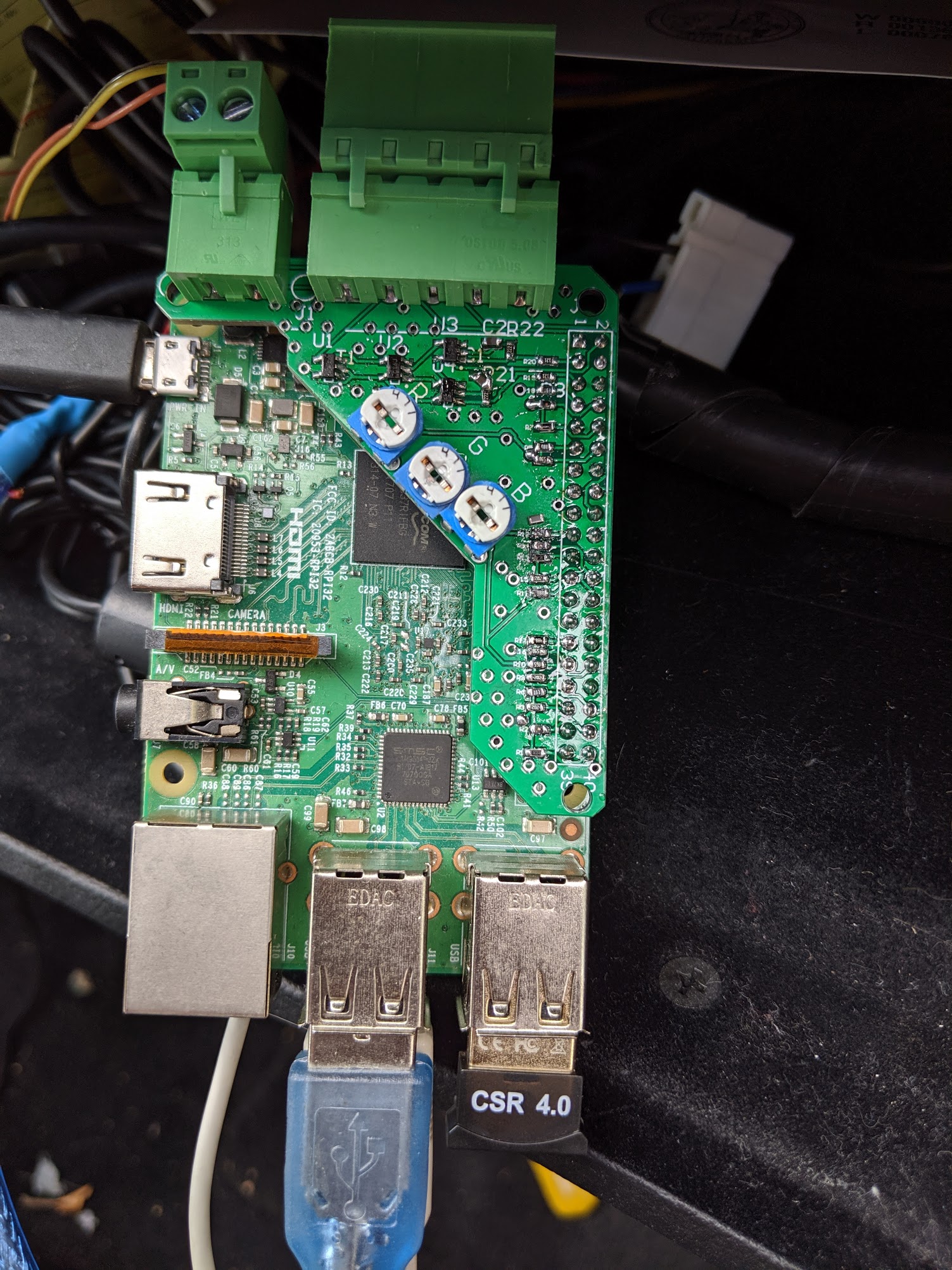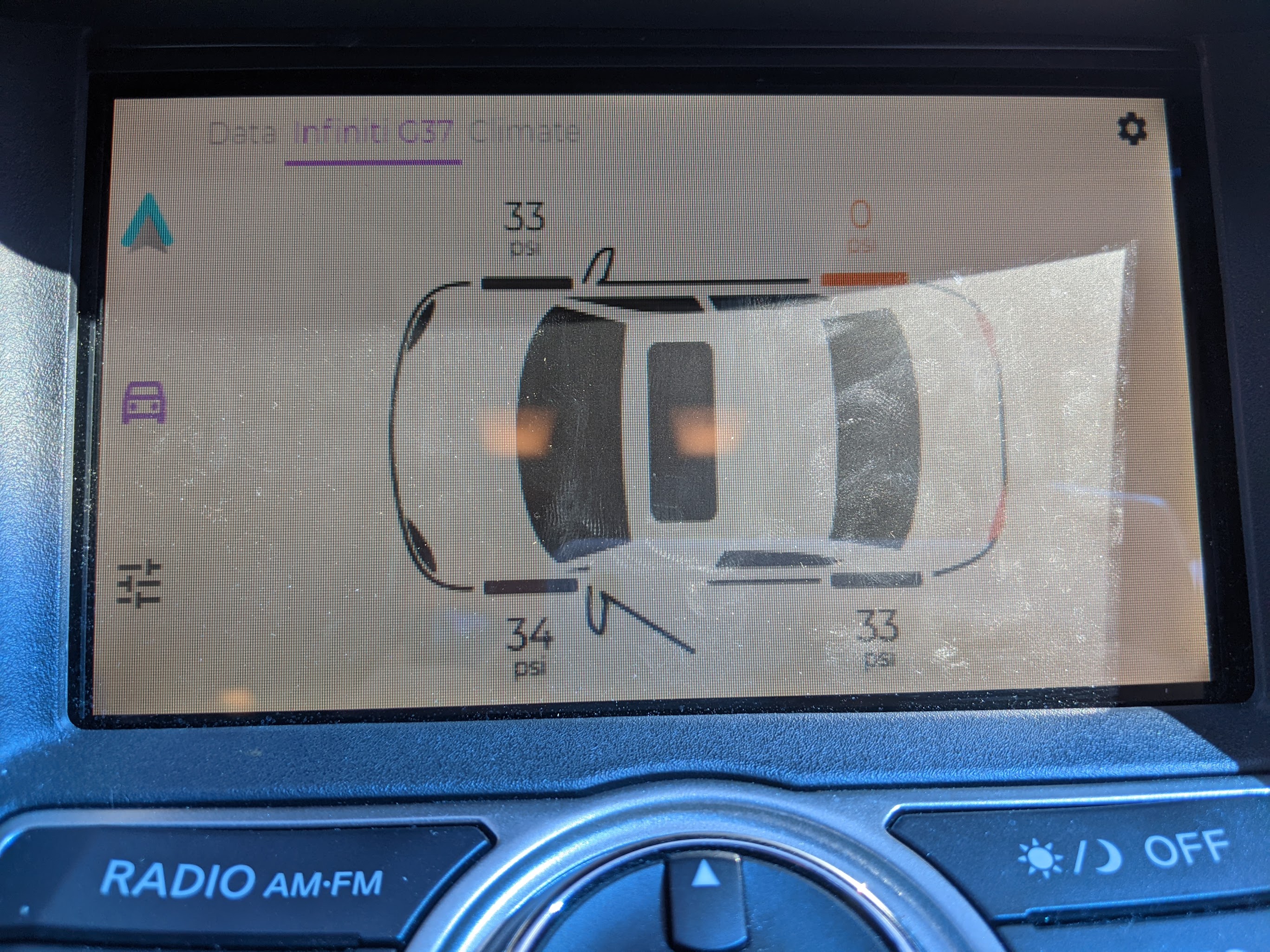
I’ve tapped into the display of my car (2011 Infiniti G37) by designing Boomerang 
and ScreenSlaver

Boomerang is a hat for a Raspberry Pi that allows it to output RGBS video. It incorporates a Gert VGA666, and a Vertical and Horizontal Sync combiner.
It also exposes two GPIO pins, which are used in combination with a Mausberry Car Supply to provide safe power to the Raspberry pi.

I’ve also added a capacitive touchscreen overlay to the stock display, which interfaces with a Raspberry Pi over i2c. A future version of Boomerang should make this interfacing easier.
Named after the villain in Incredibles 2, Screen Slaver acts as a man in the middle for the display harness of the G37. The RGBS signals are switched through a MUX which allows RGBS from Boomerang to be injected into the display based on an external switch. I’ve wired this switch into the “Snow Mode” control of the G37 (as I live in California, and don’t forsee neeing this feature).
The Raspberry Pi installed in my car is running Dash, an open source UI wrapper for OpenAuto, a reverse engineered Android Auto implementation.
I created an Infiniti G37 plugin for dash that monitors the canbus of the G37. It currently integrates TPMS, HVAC/Climate (read only), Automatic Day/Night theme switching (based on auto headlights), and other small QOL improvements.
